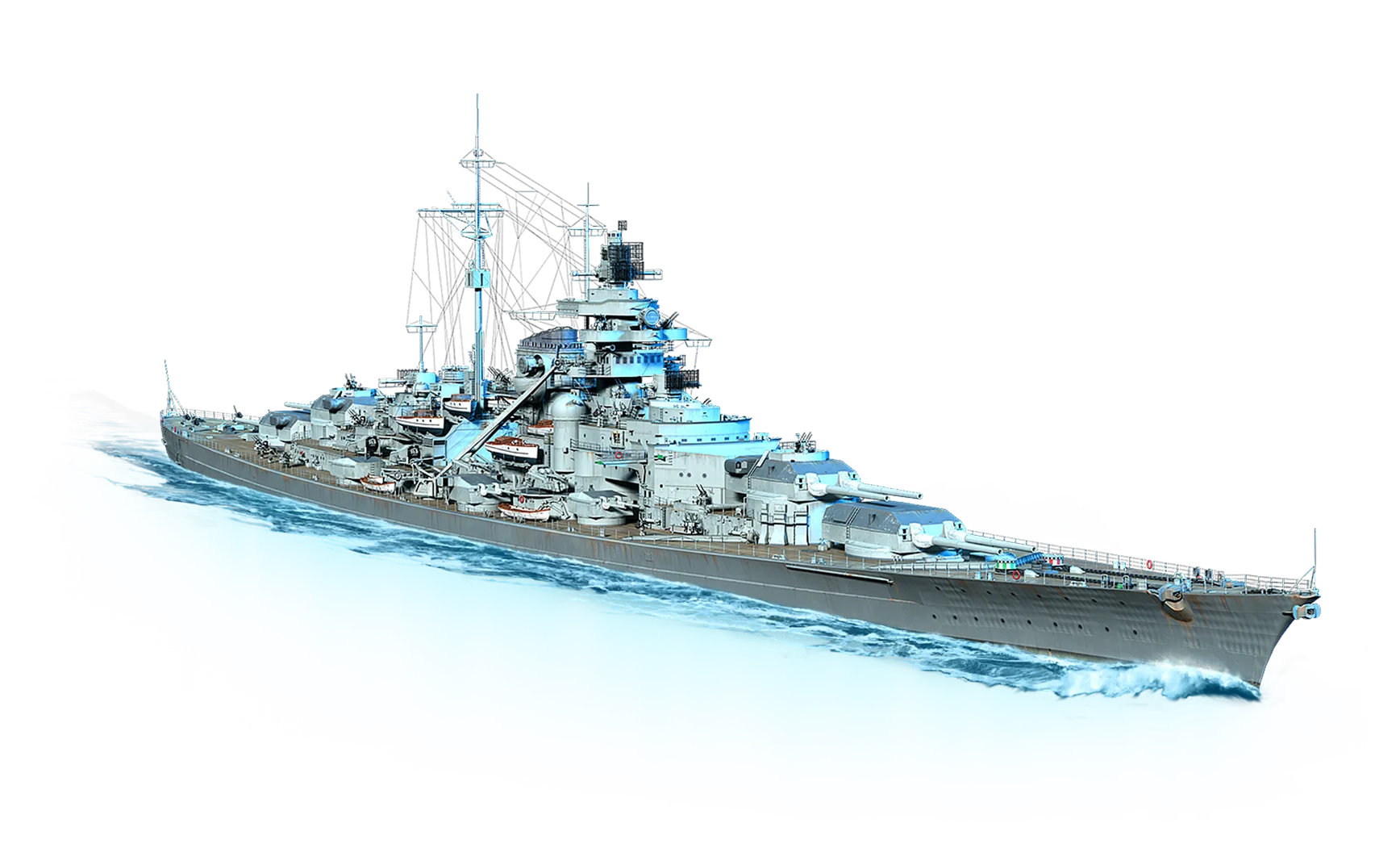Do you like the Ship Page updates?We need your opinion – are these changes we've made to these pages an improvement?
Want to hide ads?
Become a Supporting Member
Become a Supporting Member
Overview
Jump to
140Builds Submitted
29Reviews Submitted
19Records Submitted
Aug 2020Added to WoWS Builds
The Legendary Battleship Bismarck
The Bismarck, which held the title of one of the world's most formidable battleships at the onset of World War II, is an icon of marine warfare history. This colossal vessel was renowned for its sophisticated gun fire control system and potent artillery, enabli...
Bismarck Stats
Survivability
Armament
Air Defense
Maneuverability
Detectability
Bismarck Records
damage298012
Nine_Tail_Kaga
Apr 2022damage284982
Baker
Sep 2021damage248938
DaemonForged
Aug 2021damage246326
dudebub09
Apr 2024damage243703
KGR駿
Feb 2022damage212723
JFK335
Jul 2021damage211971
AndySaints92
Jun 2024damage201073
TheMexiChan
Dec 2023damage196615
SpeedEGonzalez
Jul 2021damage166573
mstar
Apr 2024Bismarck Reviews
Power3.52
Fun4.00
Learning Curve2.62
Skill Ceiling3.93
Utility3.90
rusty-rosco
Power3
Fun3
Learning Curve3
Skill Ceiling4
Utility5
Holgeir
Power4
Fun5
Learning Curve4
Skill Ceiling3
Utility4
R9DNG
Power1
Fun1
Learning Curve1
Skill Ceiling5
Utility1
0hmyg0dw0w
Power4
Fun4
Learning Curve2
Skill Ceiling4
Utility3
Krusen77
Power4
Fun5
Learning Curve4
Skill Ceiling4
Utility5
Peer Comparison
Tier VII BattleshipsBismarck Builds
Community submitted commander builds94
TankH_J_F_S_M
Sep 202036
Post Buff Hybrid18
King of the Ocean17
Anti Fire Bismarck16
King of the OCEAN!!15
12km Secondaries BismarckToxicPoison3083
Nov 202115
Hybrid Bismarck11
The New BismarkWgNerfSpotterPlanePls
Mar 20218
PG's Bismarck buildPG
Jul 20217
Secondary armament buildBismarck Consumables
Slot 1
Damage Control Party
- Charges
- ∞
- Cooldown
- 80 s
- Duration
- 15 s
Slot 2
Repair Party
- Charges
- 3
- Cooldown
- 80 s
- Duration
- 28 s
- Health per second
- 0.50%
Slot 3
Catapult Fighter
- Charges
- 4
- Cooldown
- 80 s
- Duration
- 90 s
Spotter Plane
- Shell Grouping
- 10%
- Charges
- 4
- Cooldown
- 200 s
- Duration
- 30 s
Enhanced Secondary Targeting
- Charges
- 3
- Cooldown
- 160 s
- Duration
- 30 s
- Secondary Shell Dispersion
- -50%
- Secondary Shell Grouping
- 100%
Slot 4
Sonar
- Charges
- 2
- Cooldown
- 180 s
- Duration
- 96 s
- Ship Detection
- 4.4 km
- Torpedo Detection
- 3.1 km
Want to hide ads?
Become a Supporting Member
Become a Supporting Member
Want to hide ads?
Become a Supporting Member
Become a Supporting Member
